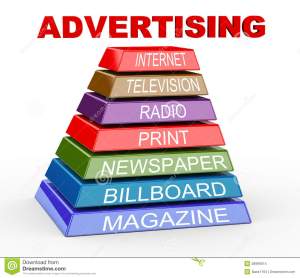
Learning Targets:
I can draw evidence from literary or informational texts to support analysis, reflection, and research.
I can introduce precise, knowledgeable claim(s), establish the significance of the claim(s), distinguish the claim that logically sequences evidence.
I can use words, phrases, and clauses as well as varied syntax to link the major sections of the text, create cohesion, and clarify the relationships between claim(s) and reasons.
I can cite strong and thorough textual evidence to support analysis of what the text says explicitly as well as inferences drawn from the text, including determining where the text leaves matters uncertain.
I can determine the meaning of words and phrases as they are used in a text, including figurative, connotative, and technical meanings.
I can analyze and evaluate the effectiveness of the structure an author uses in his or her exposition or argument, including whether the structure makes points clear, convincing, and engaging.
Essential question: What is the relationship between rhetorical devices and demographics in advertising?
ASSIGNMENT: Due by midnight Friday.
Open up a word document.
Part 1: What is advertising?
1) Familiarize yourself with the following
definition of advertising and write out in your own
words.
2) Read through the 4 P's of marketing:
product, pricing, placement and promotion. On the
same word document, paraphrase the four P's of
marketing, the purpose being to solidify your
reading.)
3) Read the "general information".
4) Read "today"
5) Review rhetorical techniques: logos, ethos and pathos.
6. Read through the definition of demographics and watch the short video. (pay particular attention to geographics, psychographics and demographics)
7 Follow the specific directions, applying to the six advertisements: two clips and four visual ads. Add the questions / responses to your word document.
8. What you will end up with is two definitions, and six sets of four questions.
3. General information: During the next three weeks, we will analyze print and commercial advertisements in terms of target audience, persuasive techniques, and production techniques.
Then you will create your own commercial. Whether we realize it, we are
constantly bombarded by advertisements - on TV, in
magazines, on billboards, on the sides of buses, etc. It
is important to look at advertisements critically, and to be
aware of the message the advertisers are trying to send. We
are not individuals to the advertising industry, but belong to
groups of people they wish to target.
4. Today, we will focus on how advertisers use ethos, logos,
and pathos in creating an advertisement, much like we
would in a persuasive essay. We will also see how these are linked to
constantly bombarded by advertisements - on TV, in
magazines, on billboards, on the sides of buses, etc. It
is important to look at advertisements critically, and to be
aware of the message the advertisers are trying to send. We
are not individuals to the advertising industry, but belong to
groups of people they wish to target.
4. Today, we will focus on how advertisers use ethos, logos,
and pathos in creating an advertisement, much like we
would in a persuasive essay. We will also see how these are linked to
demographics.
5. Rhetorical Techniques in Advertising (this material should be familiar, but please review carefully.)
Pathos: an emotional appeal; an advertisement using pathos will attempt to provoke an emotional response in the consumer.
-Can be a positive emotion, such as happiness – an image of people enjoying themselves while drinking Pepsi.
-Can be a negative emotion, such as pain – a person having back problems after buying the “wrong” mattress.
-Can include the emotions of fear and guilt – images of a starving child to persuade you to send money.
Ethos: refers to establishing the credibility or character of the product.
-Will try to convince you that the company is more reliable, honest, and credible; therefore, you should buy its product.
-Can give statistics from reliable experts, such as nine out of ten dentists agree that Crest is better than any brand.
-Often, a celebrity endorses a product to make it more credible.
Logos: an appeal to logic or reason; the logos of an advertisement is straight-forward – it tells you exactly what the product does, how it works, what it is used for.
-Will give the evidence and statistics you need to fully understand what the product does: One glass of Florida orange juice contains 75% of your daily Vitamin C needs.
6. Make sure you understand the concept of demographics
Demographics: the characteristics that make up a human population such as gender, age, and race. Advertisers think of consumers not as individuals, but as members of groups that tend to believe, behave, or purchase in certain patterns.
Please watch this short clip and then when you turn in your assignment,list the common attributes of demographics as stated in the video. These seven are important.
Watch this!
attributes of demographics (pay particular attention to geographics, psychographics and demographics)
7. Using the information you received on ethos, logos and pathos in advertising, as well as on demographics, please answer the following questions for each advertisement, responding with specific details from the ad, as well as text or dialogue that supports your response. These should be well-written responses, demonstrating a sophistication of language conventions, analytic and reasoning skills.
1. What is the message?
2. What persuasive technique(s) is being employed? Explain.
3. Who is the target audience/target demographic? Explain. In what magazine or television station might this ad appear?
4. How is this an effective ad?
Advertisement 1
Advertisement 2
Advertisement 3:
Advertisement 4:
nike
advertisement 6:
misty copeland





No comments:
Post a Comment